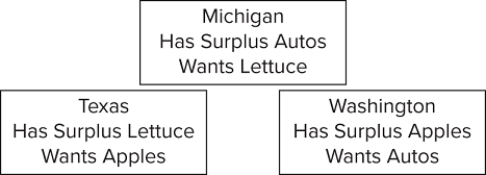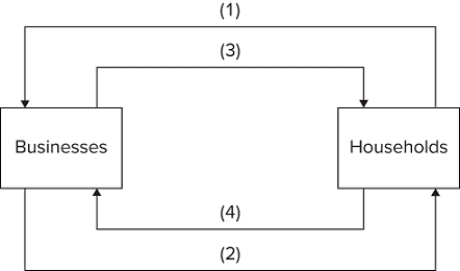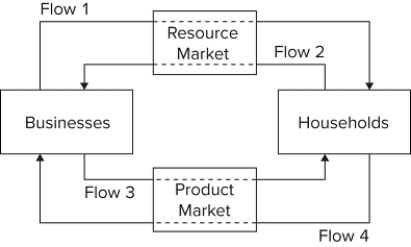A) government policies in setting wages and interest rates.
B) the quantity and prices of resources that they possess.
C) the amount of savings that they have accumulated.
D) how closely connected they are to government and business leaders.
Correct Answer

verified
Correct Answer
verified
Multiple Choice
The term "laissez-faire" suggests that
A) land and other natural resources should be privately owned, but capital should be publicly owned.
B) land and other natural resources should be publicly owned, but capital should be privately owned.
C) government should not interfere with the operation of the economy.
D) government action is absolutely necessary if the economy is to achieve full employment and full production.
Correct Answer

verified
Correct Answer
verified
Multiple Choice
If the total costs of producing 1,500 units of output is $12,000 and this output sold to consumers for a total of $15,000, then the firm would earn economic profits of
A) $15,000.
B) $18,000.
C) $3,000.
D) $12,000.
E) $27,000.
Correct Answer

verified
Correct Answer
verified
Multiple Choice
Competition is more likely to exist when
A) there is easy entry into and exit out of industries.
B) a government-issued license is required to set up a firm in an industry.
C) the government purchases most goods and services.
D) economic power is concentrated among a few large firms.
Correct Answer

verified
Correct Answer
verified
Multiple Choice
Which of the following is a distinguishing feature of laissez-faire capitalism?
A) public ownership of all capital
B) central planning
C) minimal government intervention
D) a circular flow of goods, resources, and money
Correct Answer

verified
Correct Answer
verified
Multiple Choice
The market system's answer to the fundamental question "How will the system promote progress?" is essentially
A) "Through government-funded research programs."
B) "Through redistribution of income to promote greater equality."
C) "Through training and retraining programs."
D) "Through the profit potential that encourages development of new technology."
Correct Answer

verified
Correct Answer
verified
Multiple Choice
Which of the following best illustrates the circular flow model in action?
A) Bobbie goes to work and builds cars; she uses the income she receives to buy food at the grocery store.
B) Evan buys a new couch; the owner of the furniture store uses some of the money from the sale to pay her supplier and uses the rest to take her family out to dinner.
C) Boeing experiences a surge in orders for new airplanes, prompting the company to hire more workers.
D) All of these answers illustrate the workings of the circular flow model.
Correct Answer

verified
Correct Answer
verified
Multiple Choice
Private property and freedom of choice in a market system have the following implications, except
A) individuals are free to take on the financial risks involved in a business.
B) trades that take place in the economy are mutually agreeable transactions among individuals.
C) economic agents can act in their own self-interest.
D) large firms are allowed to coerce other firms and individuals.
Correct Answer

verified
Correct Answer
verified
Multiple Choice
The simple circular flow model shows that
A) households are on the buying side of both product and resource markets.
B) businesses are on the selling side of both product and resource markets.
C) households are on the selling side of the resource market and on the buying side of the product market.
D) businesses are on the buying side of the product market and on the selling side of the resource market.
Correct Answer

verified
Correct Answer
verified
Multiple Choice
The main characteristics of a modern market system include all of the following except
A) entrepreneurs are free to obtain and use resources to produce goods and services.
B) consumers are free to buy goods and services that their budgets allow.
C) economic power is diffused by competition among economic units.
D) government is restricted to national defense and does not intervene at all in various markets.
Correct Answer

verified
Correct Answer
verified
Multiple Choice
Businesses seeking higher profits and resource suppliers seeking higher incomes lead to changes in the allocation of resources among different firms and end up with
A) consumers at the losing end.
B) output that society wants.
C) unnecessary conflict and turmoil.
D) a need for government action.
Correct Answer

verified
Correct Answer
verified
Multiple Choice
Which of the following is not a reason why specialization and trade are beneficial to society?
A) The total output of economic goods may be increased even without any increase in resources.
B) Scarce resources are utilized more efficiently by exploiting differences among them.
C) Specialization fosters learning by doing, thus lowering the unit-costs of products.
D) Firms and workers become less dependent on others for producing goods and services.
Correct Answer

verified
Correct Answer
verified
Multiple Choice
 On the basis of the information, it can be said that
On the basis of the information, it can be said that
A) no coincidence of wants exists between any two states.
B) a coincidence of wants exists between Michigan and Washington.
C) a coincidence of wants exists between Texas and Washington.
D) a coincidence of wants exists between Michigan and Texas.
Correct Answer

verified
Correct Answer
verified
Multiple Choice
The most efficient combination of resources in producing a given output is the combination that
A) comes closest to using the same quantities of land, labor, capital, and entrepreneurial ability.
B) minimizes the cost per unit of output.
C) uses the smallest total quantity of all resources.
D) conserves most on the use of labor.
Correct Answer

verified
Correct Answer
verified
Multiple Choice
 Refer to the diagram. Arrows (1) and (2) represent
Refer to the diagram. Arrows (1) and (2) represent
A) goods and resources, respectively.
B) money incomes and output, respectively.
C) output and money incomes, respectively.
D) resources and goods, respectively.
Correct Answer

verified
Correct Answer
verified
True/False
Quantitative measures of managerial success, such as production targets or quotas, are highly foolproof and are thus ideal to use in increasing economic efficiency.
Correct Answer

verified
Correct Answer
verified
True/False
Low-cost production is not important for Bitcoin miners since Bitcoin is intangible and exists only in cyberspace.
Correct Answer

verified
Correct Answer
verified
Multiple Choice
The economic function of profits and losses is to
A) bring about a more equal distribution of income.
B) signal that resources should be reallocated.
C) eliminate small firms and reduce competition.
D) tell government which industries need to be subsidized.
Correct Answer

verified
Correct Answer
verified
Multiple Choice
From society's point of view, the economic function of profits and losses is to
A) promote the equal distribution of real assets and wealth.
B) achieve full employment and price level stability.
C) contribute to a more equal distribution of income.
D) reallocate resources from less-desired to more-desired uses.
Correct Answer

verified
Correct Answer
verified
Multiple Choice
 Refer to the diagram. Flow 1 represents
Refer to the diagram. Flow 1 represents
A) wage, rent, interest, and profit income.
B) land, labor, capital, and entrepreneurial ability.
C) goods and services.
D) consumer expenditures.
Correct Answer

verified
Correct Answer
verified
Showing 21 - 40 of 287
Related Exams